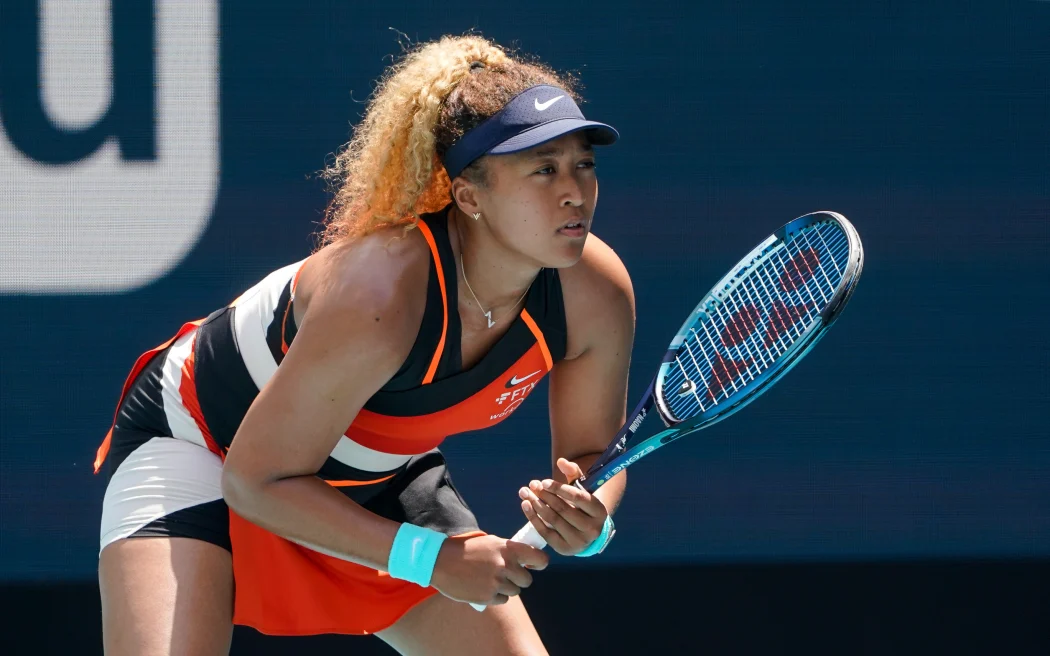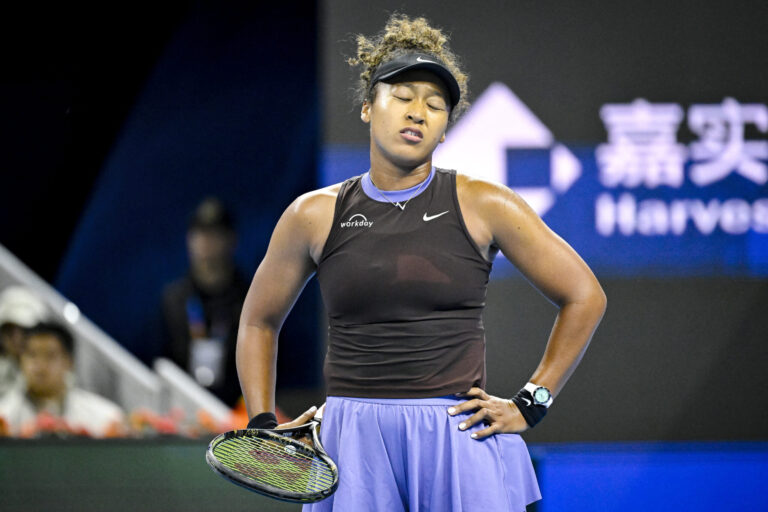
Naomi Osaka: Making Her Competitive Debut in Auckland after Returning from a Break
Naomi Osaka has long been a headline-grabbing figure in tennis, captivating the sports world with her incredible talent, bold personality, and candid approach to mental health. Her journey in tennis has been a roller-coaster ride, filled with soaring triumphs, struggles with pressure, and, more recently, her decision to step back and reassess her priorities. In 2025, the tennis community is eagerly watching her return to the sport, marking her competitive debut at the ASB Tennis Arena in Auckland, where she will play her first tournament after a long hiatus.
While the 2025 Auckland event is not her first appearance since her break, it is significant in that it signals a new chapter for Osaka. The last time she played in Auckland, in 2023, she made headlines after losing in the quarterfinals to eventual finalist Ana Konjuh. That tournament marked one of her few appearances on the WTA circuit during a period when Osaka was grappling with various personal and professional challenges.
Now, as Osaka prepares for her return, the anticipation is palpable. The question on everyone’s mind is whether she can recapture the form that once made her one of the most dominant forces in women’s tennis. After all, her career has been a whirlwind of highs and lows, and the road ahead is still uncertain. But if anyone can turn the tide and return to their former glory, it’s someone as mentally strong, disciplined, and determined as Osaka.
In this article, we will explore Osaka’s journey leading up to her return to competitive tennis in 2025, her struggles and triumphs, what her appearance in Auckland represents for her career, and the challenges she will face as she works to regain her place at the top of the game.
Osaka’s Meteoric Rise: From Rookie to Champion
Osaka’s rise in the tennis world was nothing short of meteoric. She burst onto the scene in 2018 when she won her first Grand Slam title at the US Open. This victory was historic in several ways. Not only did Osaka become the first Japanese player to win a Grand Slam singles title, but she also defeated the legendary Serena Williams in the final, marking a changing of the guard in women’s tennis.
The following year, she won her second Grand Slam at the Australian Open, making her one of the few players to win back-to-back Grand Slam titles in the Open Era. Her unique combination of power, agility, and poise on the court made her a formidable opponent. Her ability to handle pressure in high-stakes situations, paired with her calm demeanor, set her apart from her peers. At just 21 years old, Osaka was being hailed as one of the future faces of the sport.
Beyond her tennis achievements, Osaka became an influential figure in the sports world for her social activism. She used her platform to advocate for racial justice and mental health awareness, breaking down barriers and inspiring young athletes worldwide. Her fame transcended tennis as she became a symbol of empowerment for many, particularly for women of color in sports.
However, with all her success came immense pressure. The expectations placed on her by both fans and the media were sky-high, and Osaka’s struggle with balancing her career with her mental health became increasingly evident.
The Struggles: Mental Health, Burnout, and a Break from Tennis
As Osaka’s success continued, so did the mental toll of competing at the highest level. The demands of being a top-tier athlete, constantly in the spotlight and expected to perform at the highest level, began to weigh heavily on her. In 2020, she took a step back from tennis after withdrawing from both the French Open and Wimbledon to focus on her mental health. This move was groundbreaking for its honesty and transparency, as Osaka publicly addressed her struggles with anxiety and depression. At the time, she revealed that dealing with press conferences and the expectations of being a champion were overwhelming, and that taking a break was necessary for her well-being.
While many praised Osaka for her courage, the decision also marked the beginning of a difficult period in her career. Her time off, combined with ongoing personal challenges, led to a prolonged period of inconsistent results. Osaka’s performance on the court began to falter as she faced early exits in tournaments and struggled to find her rhythm. By 2023, after taking a long hiatus, she returned to the sport but was met with difficulties in regaining her championship form.
Osaka’s loss to Ana Konjuh in the quarterfinals of the 2023 Auckland Open was a telling moment in her career. It underscored how far she had fallen from her previous dominance, where she would routinely cruise to the later rounds of tournaments. While losing to a talented player like Konjuh wasn’t disastrous in itself, the defeat marked a period of frustration for Osaka, who was struggling to reconcile her past successes with her current struggles.
Despite these challenges, Osaka remained a beloved figure in the sport, and her openness about her mental health battles brought much-needed attention to the issue. However, after several years of inconsistent results and self-reflection, Osaka made the decision to step away from the sport for a while and focus on rediscovering herself both on and off the court.
Osaka’s Return to Auckland in 2025: A Fresh Start?
Fast forward to 2025, and Osaka is gearing up for what feels like a fresh start in her tennis career. She has made the decision to return to the court, with Auckland being her first competitive appearance since her extended break. This is a monumental moment for Osaka, not only because of the pressures of returning after so much time away but also because of what it represents for her as an individual. This tournament could serve as a crucial point in her comeback story and could either reignite her passion for tennis or push her to consider stepping away once again.
The ASB Tennis Arena in Auckland holds special significance for Osaka. It is one of the first major events in the year, and it marks a turning point in her career after years of uncertainty. Her performance in Auckland, and how she handles the pressures of competition, will be a litmus test for her future in the sport. A strong run in the tournament could mark the beginning of her return to prominence, while a disappointing exit could force her to reassess her place in the tennis world once again.
The competition will undoubtedly be fierce. In addition to Konjuh, Osaka will face other rising stars and established veterans, all of whom will be gunning for the title. The prospect of facing younger players who may have surpassed her in rankings and skill during her absence could prove both motivating and intimidating.
Auckland’s tournament also offers Osaka a valuable opportunity to ease back into the competitive rhythm of the sport. It’s an ideal setting for a player returning after a break: relatively low-stakes in comparison to the Grand Slams, yet still competitive enough to gauge her progress. Success here could give her the confidence she needs to continue her comeback, while an early loss might lead her to rethink her future trajectory.
What Can Osaka Bring to the Table in 2025?
While much of the talk around Osaka’s return centers on her performance, it’s important to understand what she can bring to the table both as a player and as a figure within the tennis world. Even after a long absence, Osaka remains a formidable force on the court due to her raw talent. Her serve is one of the most powerful in the game, and her forehand is lethal when firing on all cylinders. Osaka’s athleticism, combined with her experience, makes her a dangerous opponent for anyone.
However, her game has always been heavily reliant on mental resilience. Osaka’s greatest strength is her ability to stay calm in high-pressure situations, a quality that has led to her success in some of the most important matches of her career. But mental fortitude can be fragile, and Osaka’s struggles with mental health have impacted her consistency over the years.
In 2025, it will be crucial for Osaka to find a way to strike a balance between competing at the highest level and maintaining her mental well-being. If she can manage the stress of competition while keeping her mental health in check, she has the potential to return to her former level of play.
Challenges and Expectations: The Road Ahead
The road to success for Osaka is fraught with challenges. For one, there are physical obstacles, as returning to top-level competition after an extended absence requires not only mental strength but also physical conditioning. Osaka will need to ensure that her body can handle the rigors of playing on the WTA Tour once again, especially given the intense demands of travel and the physical grind of tournament schedules.
Mentally, she will need to confront the expectations placed on her. The pressure to live up to her past achievements will be immense, and the weight of that pressure could either fuel her or hold her back. For a player who has already dealt with mental health struggles, the task of managing expectations, both internal and external, is a critical component of her comeback journey.
Osaka also faces the challenge of dealing with younger players who have improved in her absence. The WTA Tour is filled with incredibly talented young stars, and some of them may have surpassed Osaka in both rankings and playing style. Adapting to a changing landscape and competing against these rising stars will require Osaka to stay flexible and continue to evolve her game.
Ultimately, the expectations for Osaka’s return are mixed. There is a deep respect for her as a player, but also a sense of uncertainty surrounding her future. Some fans believe that she can return to the top, while others remain skeptical of her ability to reclaim her past glory. Regardless of what happens in Auckland or beyond, Osaka’s comeback is bound to be a compelling story—one of redemption, struggle, and the quest for balance between mental health and sporting success.
Conclusion: A New Chapter for Naomi Osaka
Naomi Osaka’s return to the competitive tennis circuit in 2025 is a moment of great anticipation and emotion. Having faced a series of personal and professional challenges, Osaka’s determination to make a comeback underscores her commitment to herself, her career, and her fans. Whether she emerges victorious in Auckland or faces more setbacks, this next chapter of Osaka’s career will be about more than just tennis; it will be about resilience, mental strength, and the pursuit of joy in her sport.
No matter the outcome, Naomi Osaka’s journey will continue to inspire countless fans who see her as more than just a tennis champion—she is a symbol of overcoming adversity, finding one’s purpose, and fighting through life’s toughest challenges.





